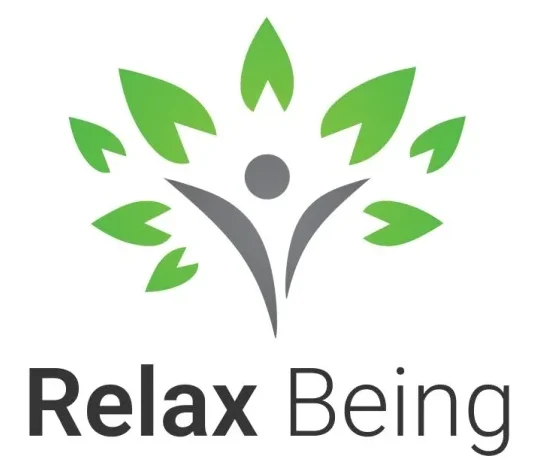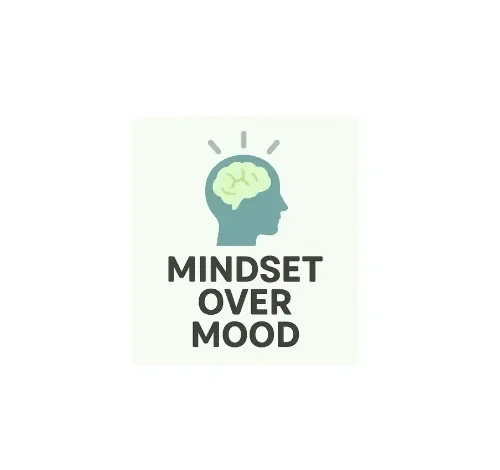Impact of Hybrid Working
Hybrid Work Defines Modern Organizations
Work Model Structures in Hybrid Organizations
From my own experience the benefits of Hybrid Working and how it boosts productivity, employee well-being, and business growth. Learn strategies to balance in-office collaboration with remote efficiency. I’ve seen how the right work model can become the backbone of a truly successful hybrid organization.
A well-designed structure gives employees the clarity they need to feel engaged, while still staying connected to their teams no matter where they are. When the work rhythm blends flexibility with collaboration, people naturally become more productive and motivated to contribute.
I once worked in a team where half the members were in-office while others worked remote. What made it thrive wasn’t fancy tools, but a model that respected everyone’s needs. Leadership treated the organization as one unified system, ensuring employees stayed connected through clear communication and supportive practices. That balance made the hybrid working approach not just functional, but a genuinely successful way to keep people both engaged and productive.
Remote-First Model
From my own professional journey, I’ve seen how a hybrid working model can empower employees to work more efficiently when they can remotely manage daily tasks and still make occasional visits to the office. This setup allows team meetings and projects to feel more intentional rather than routine, which in my experience makes collaboration stronger. It becomes an ideal choice for organizations that are prioritizing flexibility without sacrificing connection, giving people a chance to shape how and where they contribute best.
What excites me most about this approach is how it helps in attracting talent from diverse locations. I’ve noticed skilled professionals often value freedom more than perks, and when a company supports this, they naturally draw in people who might otherwise be out of reach. By blending independent focus with meaningful in-person interactions, the remote-first model creates balance, making the work environment more adaptive and forward-looking.
Office-First Model
In many organizations, the model still leans towards an office-first Hybrid Working, where employees spend more time on-site. From my own experience, this setting creates a natural rhythm where collaboration feels smoother and problem-solving happens faster in person. While flexibility exists, the balance is usually tilted towards being present at the office, which builds stronger routines and helps leaders maintain visibility over team progress.
At the same time, work is not limited only to the office walls. Teams are still encouraged to work remotely when projects demand deep focus or when personal situations require it. This mix ensures that people do not feel trapped in rigid schedules but rather supported in choosing how they can deliver their best. I have seen how a clear office-first structure provides stability, while the option of remote days introduces just enough breathing space to keep employees motivated and engaged.
Flexible Hybrid Model
From my own experience, the flexible hybrid working model has given employees more autonomy in how they choose their location of work. Instead of being tied to one desk, people can decide whether they are more productive at home or in the office. This freedom helps them align their daily focus with their priorities, something I found valuable when managing multiple projects. It feels empowering to have that flexibility while still being connected to the team.
Another benefit is the ability to prepare a personal schedule that matches individual hours of productivity. Some of my colleagues thrive in the morning, while others perform better later in the day. By letting them design their routines, the organization supports both efficiency and wellbeing. In practice, this approach balances structure with independence, making it easier to get meaningful work done without losing collaboration.
Fixed Hybrid Model
From my own experience guiding organizations through hybrid transitions, I’ve seen how a model with a set schedule creates both comfort and challenges. In a fixed hybrid working model, employees often follow an alternate rhythm, such as spending three days each week in the office and working remotely for the rest. This structure may look rigid at first, but it actually facilitates smoother coordination because teams know exactly when to expect one another in-office. For instance, project planning becomes simpler when everyone aligns on predictable days.
At the same time, the design of this approach balances consistency with flexibility. Even though the schedule is defined, the ability to manage part of the work through remote work allows professionals to maintain focus without distractions. I’ve observed that people who prefer routine thrive in this setup, as it reduces confusion and supports collaboration while still leaving space for independence. It shows that sometimes, a carefully crafted routine can actually empower both people and performance.
Hybrid Setups Optimize Resources
From my experience of guiding organizations through change, I’ve seen how Hybrid working setups create an opportunity to optimize resources while still maintaining strong operational efficiency. By blending remote flexibility with in-office work, businesses can strategically allocate time, tools, and space in ways that truly meet evolving workforce needs. This approach not only saves costs but also makes employees feel valued, since they can choose environments that fit their best performance moments.
I’ve worked with teams where such setups reduced unused office space while increasing productivity. Leaders discovered that by listening to their people and adjusting schedules, they could design Hybrid working systems that fit both the company and the staff. The smart use of technology, paired with thoughtful planning, helps organizations find balance giving workers freedom while ensuring that core operations never lose efficiency.
1. Reduced Office Space Costs
In today’s Hybrid working many companies now see that not all employees need to be on-site daily, and this change allows them to downsize their office spaces. From my own professional journey, I noticed how firms began to redesign workplaces with more collaborative areas and fewer individual workstations. This shift can lead to smarter working habits, where people come in only when it adds value, rather than sitting in a cubicle just to be seen. Them being present strategically helps focus on meaningful tasks with teams or clients.
The impact shows in cost savings for organizations. Paying rent, utilities, and maintenance for large floors is no longer practical when fewer desks are used. I once worked in a setup where the reduced footprint brought significant relief on overheads, allowing investments in better tools instead of extra square footage. Optimizing spaces this way makes sense; it is efficient, modern, and proves that flexible arrangements are often more valuable to both employers and staff on the ground.
2. Improved Technology Utilization
In today’s Hybrid working models, there is a strong demand for smarter investments in digital tools and platforms that truly enhance teamwork. From my own experience, I’ve seen how Cloud-based solutions can simplify daily tasks by supporting virtual meeting setups and reliable project management systems. These not only ensure that employees remain productive and connected no matter where they work, but also create smoother channels for communication and collaboration.
Such approaches often yield higher returns by boosting efficiency and streamlining workflows. For instance, teams using unified dashboards for project tracking find less confusion and faster delivery times. When technology is used with purpose, it doesn’t just support daily routines, it transforms the way people operate, making hybrid work not just possible but genuinely effective.
3. Optimized Workforce Productivity
From my own experience of working in Hybrid setups, I have seen flexibility in hybrid working enhances individual and team productivity. When employees choose whether to work remotely or in the office, they naturally gravitate toward the best environment that supports their focus. Some people perform deep tasks better at home without interruptions, while others thrive in the office where quick discussions save time. This freedom gives professionals the confidence to perform at their peak rather than adjusting to rigid schedules.
At the same time, the team collaboration side of Hybrid working models cannot be ignored. Being together in person still matters for brainstorming and creative energy, but it does not need to happen every day. When the balance is right, teams get the best of both worlds: quiet spaces for deep concentration and shared spaces for lively idea exchanges. From what I’ve noticed, this rhythm not only boosts output but also helps employees feel more engaged and valued, which further drives productivity.
4. Strategic Resource Allocation
In Hybrid working environments, I have seen how organizations can allocate their resources strategically without overspending. Instead of pouring funds into extensive IT infrastructure and oversized office spaces, smart businesses now provide employees with portable, remote-friendly tools like laptops. This shift not only reduces physical overhead but also ensures staff can work efficiently from anywhere. The trick lies in maintaining balance keeping the right digital foundation while avoiding unnecessary investments that tie people down.
I’ve also observed that successful setups focus heavily on giving teams secure cloud access so they can work seamlessly across locations. By investing wisely, companies empower people with flexibility while still protecting valuable data. The freedom to collaborate with confidence whether in the office or remotely shows that resources are best used When technology travels with workers, hybrid working becomes both flexible and secure.
Challenges in Hybrid Work Engagement
Isolation Reduces Wellbeing
From my own experience hybrid working, While remote working from home can feel fantastic at first, over time many employees realize it can also feel lonely. Subtle feelings of isolation can slowly creep in, especially when there is limited interaction with colleagues. I have personally noticed that when I spent weeks away from the office, I began to miss the spontaneous conversations that once built genuine camaraderie during lunch breaks or quick desk chats.
Even though technology makes remote communication easier, it often lacks the warmth of face-to-face exchanges. Without those natural moments of shared laughter or quick problem-solving talks, employees can feel disconnected from their team’s energy. This gap reminds me of how much we rely on daily conversations in the office to feel supported, understood, and part of something bigger than just our individual tasks.
Cohesion Impacts Collaboration
In a hybrid working model, building strong cohesion among teams is not always simple. From my own experience, I noticed how employees working remotely often feel a subtle disconnect when they are not in the office during key discussions. While some team members thrive in flexibility, others experience exclusion when they cannot easily dial into a meeting or contribute naturally. These hidden challenges can weaken the group’s ability to brainstorm effectively, especially when everyone does not share the same rhythm of collaboration.
The real challenges that teams face come from maintaining a balance where each employee feels equally valued. In a mixed setup, I’ve seen how even motivated members can struggle when there’s no strong structure to keep the team connected. Having worked across both physical office setups and fully remote projects, I’ve realized that small gaps in communication can snowball into big problems if not addressed early. Creating simple habits like giving every person space to speak during a brainstorm or checking in when someone is quiet can make collaboration feel more natural and less like a forced process of keeping everyone “dialed in.”
Over-communication Hinders Productivity
In a hybrid working setup, I have often noticed that constant emails, endless messages, and repeated pings on Slack or Zoom can feel less like support and more like chaos. An HBR study highlighted that teams in blended workplaces often struggle with over communication and under-clarity, which directly impacts productivity. From my own experience hybrid working with remote workers, what starts as an effort to ensure clarity often ends up creating confusion and even frustration when every small update is shared through multiple platforms.
The problem is not just the volume of communication, but its poor translation into useful action. When online messaging becomes a recipe for noise, professionals spend more time sorting through repeated messages than focusing on meaningful tasks. This overload leaves little room for deep work, and the lack of clear direction often pushes people toward burnout. In the hybrid working, success requires enough updates to stay aligned, but not so many that the signal is lost in the noise.
Measurement Requires Performance Metrics
In a hybrid working setup, I have seen how tracking can be tricky when managers are only relying on outdated metrics like hours worked. These numbers rarely reflect actual contributions, and that makes many leaders worry about whether remote employees are as productive as their in-office counterparts. The reality is, different environments shape how people deliver, and what matters more is the value of their tasks, not the clock time they log in.
In a hybrid working setup some companies such as Google have set strong examples by using OKRs and results-based performance tracking. By focusing on outcomes rather than just time spent, organizations can clearly measure performance across teams without bias. I’ve personally experienced how this shift encourages people to align their efforts with goals instead of stressing about hours. When managers evaluate contributions through meaningful metrics, it not only strengthens trust but also ensures both remote and office staff are recognized fairly for their work.



